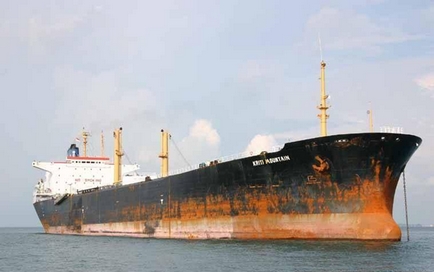 Lots of unneeded ships are waiting for their turns to be scrapped on the beaches of Bangladesh, raising the rates for iron ore transporting and causing big losses for STX Pan Ocean Co. (the bigggest carriers' owner in Korea).
Lots of unneeded ships are waiting for their turns to be scrapped on the beaches of Bangladesh, raising the rates for iron ore transporting and causing big losses for STX Pan Ocean Co. (the bigggest carriers' owner in Korea).
The price of delivering ironstone by heavy-tonnage vessels will get six times more expensive, this will be up to $14,900 per day in December 2012. According to the data from IHS Inc (the research company in Colorado), the rates are growing because recently the fleet decreased by 0,6%.
From the 2008th the profits from Capesizes decreased by 94%, since the supply of such vesseles grow in prices 3 times faster than the demand, consequently owners had to sell their ships. The world's largest shipbroker Clarkson Plc (CKN) informed that this year the carriers with the capacity 12,8 mln dead weight tons (this iron amount would be sufficient for constructing more than a hundred Empire State Buildings) will be diamentled. There are so many unwanted ships around that Bangladesh, the second largest vessel recycler in the world, is running our of space on the local beaches. As Anil Sharma, chief executive at Global Marketing Systems Inc, said, that these days the biggest boom for scrapping may be observed.
The cost of demolition
According to Clarkson's estimation, this year demolition of Capesize will be 22% more expensive. For example, a 15 year old ship cost 4,4 million dollars more than its scrap metal several months ago. According to HIS info, last month the fleet decreased till 272.9 million tons (0,6%).
The ships sent for scrap are located on the beaches of Bangladesh for demolition. As the World bank reported in December 2010, the machinery parts and hulls are use in domestic industry, they are turned into steel supplying the biggest part of metal manufacture needs in Bangladesh. The growth of demand for demolition caused more ships to be scrapped in India, this country still has vacant capacity.
For the time being there are still too many vessels and while the fleet is being diminished, STX Pan Ocean's income won't rise as good as before (the company's representatives informed via e-mail). However, next year the market will probably get more stable.
Slow improve of fleet
According to Clarkson's estimation the global area of Capesizes will grow by 14% and 4% more in 2013 (in 2011 this indicator fell down by 19%). The demand for dry-bulk vessels will rise by 4% reaching 4,1 billion tones. This slow growth of fleet could help to occupy the biggest part of STX Pan Ocean's Capesizes. There are 28 of them and they amount 55 % of their fleet.
As the analyst at Dongbu Securities Co. informed, this is good for STX Pan Ocean as this will contribute in improving the company's revenue. The bulk-shipping market is intended to recover soon and it's a good sign that shipping companies do their best to cover spare capacities.